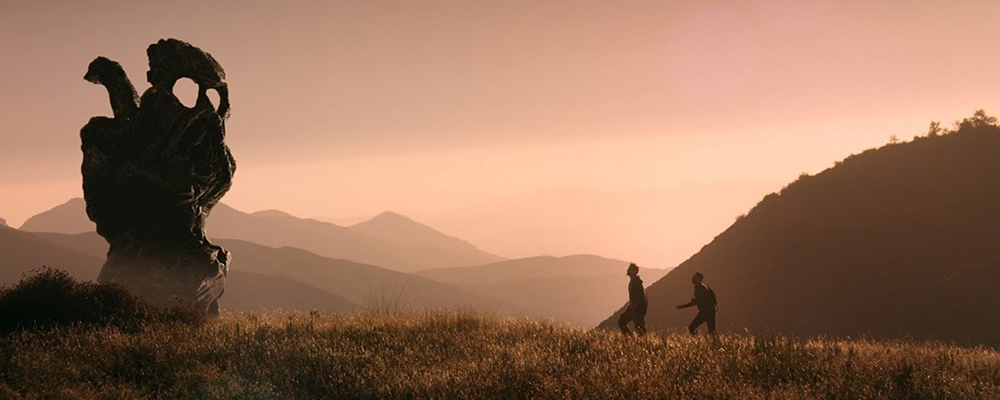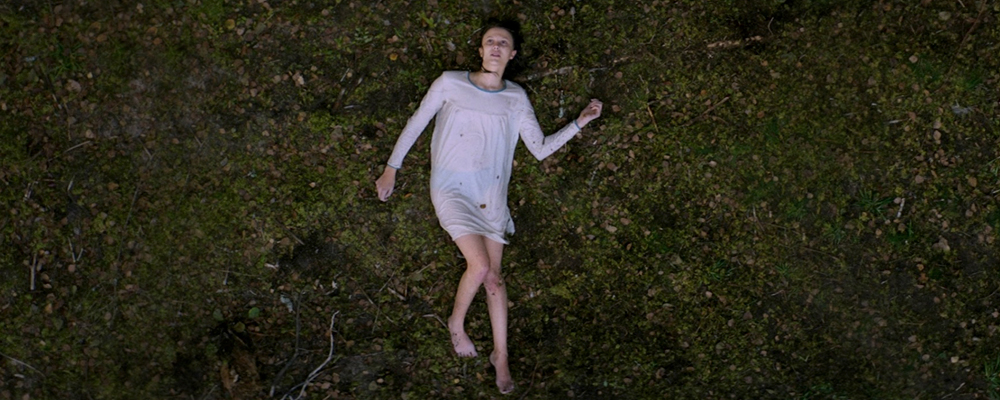‘The Endless’ Directors Justin Benson and Aaron Moorhead Craft Their Uniquely Terrifying Vision
Aaron Berke
“The Endless” is a new sci-fi horror film that takes elements of both genres and blends them into something fresh and unique. The film follows two brothers, Aaron and Justin, who grew up in a mysterious UFO death cult in the Midwest and fled 10 years ago. With their lives floundering, Aaron longs for the kinship and structure that the cult brought them and seeks to return. Justin, who believed the cult was designed to inspire mass suicides, has heavy misgivings about returning. But Justin agrees to go back for a couple of days to appease his brother. As they reintegrate into the cult livelihood, it becomes increasingly clear that there is a mysterious force at work within its boundaries. As Aaron and Justin become reintegrated and participate in the cult’s bizarre activities, strange events unfold. The mysterious power that rules over the cult begins to take shape and threatens to permanently engulf the brothers.
“The Endless” is spearheaded by Aaron Moorhead and Justin Benson, who star in the film as the two characters named after themselves. In addition, Moorhead and Benson wrote, directed and edited the film. “The Endless” is a film that’s entirely singular, despite being the work of two directors. According to Moorhead, this unique achievement was made possible by lots of preparation, and a clear unity of vision.
“We view filmmaking as – if we’re doing it together as co-directors, there’s no reason then not to just look at the task we have to do as a huge checklist, and then we just kind of go attack it,” said Moorhead. “The reason that works so that it doesn’t end up having two people in massive conflict all the time, one is rehearsal, we just do a lot of rehearsal… The other thing is, Justin and I wouldn’t be co-directing if we didn’t have the same taste and we didn’t know we were building towards the same movie. So ultimately it’s a pretty conflict free relationship when it comes to how we handle the duties that must be done.”
For Moorhead and Benson, the vision began with their 2012 film, “Resolution,” which took place in the same universe. Though the films are only loosely connected, they have in common the same antagonist, a mysterious deity that rules over the boundaries of the cult. The deity itself is never seen in “The Endless,” but its malicious presence is felt. According to Benson, the deity has sinister designs for every single person in its grasp. “Something that’s really fundamental to the way that it operates is that it does toy with people,” said Benson. “People seem to interpret the way that it toys with them in different ways.”
Moorhead noted that, though the film doesn’t reveal the deity, he and Benson know exactly what it looks like. “There’s a very lengthy document describing exactly what it is and what it’s doing and what it wants and where it’s from,” said Moorhead. “We sent it to our sound designer, so that he could invent sounds [for the deity]. So we sent that [document] to him, and we’ve discussed it since then quite a bit.”
Part of the film’s intrigue lies in the way the cult’s members perceive this hidden deity. The group’s de facto leader, Hal, constantly tries to solve a complex equation that he hopes will reveal the being’s identity. One character, Lizzy, paints pictures of the landscape which include a pair of sinister slanted eyes watching over everything. Aaron and Justin experience impossible visions, like two moons nestled side by side in the sky. The group also engages in ritual games with the hidden deity, including a round of tug-of-war between the being and volunteers brave enough to challenge it. The tug-of-war sequence begins, like many of the film’s sequences, with something just a little bit out of place. As the scene builds, it turns more and more bizarre, eventually becoming downright terrifying.
Besnon commented on how the tug-of-war sequence encapsulates the film’s scare tactics. “On the one hand, obviously, we’ve never made a very traditional horror film that sort of follows the template and has the rhythm of jump scares where you should have them,” Benson said. “We kind of just do our own thing. And this movie, from the beginning, the intent was to give people the thrill of being frightened, but… to try to frighten people at a deeper level and trying to be innovative about it. So [the tug of war sequence] is a good example of something that it was like, ok this is a creepy idea, this is conceptually frightening, this is an interesting visual, it even fits with the movie thematically.”
Activities like the tug-of-war bring Aaron closer to the cult’s members, while pushing Justin further away. Eventually, Aaron and Justin become separated completely, as the power that rules the cult reveals its hand. By this point, the audience is fully invested in the two brothers, and we want nothing more than to see them reunite and escape. As Moorhead suggests, making the two protagonists interconnected, fully fleshed out characters was integral to making the film’s scares work.
“One of the biggest things is really trying to get people to care about the characters,” said Moorhead. “So when you do feel like possibly they’re in danger that it has impact, that they’re not just archetypes… We try to create these real people that, no matter what danger they’re in, you actually care about them. Even if even if it’s minimal, it just makes you feel really, really uneasy.”
In addition to the brothers’ separation, the film’s visual aesthetic and jarring sound design become increasingly enveloping as the deity takes control. Moorhead elaborated on how sound design helps to impact and facilitate the film’s scares. “When you see a cut of our movie without sound design, it doesn’t work. It just doesn’t work. Working with our sound designer, Yahel Dooley, for months and months and months, getting the sound design right [was crucial]. A lot of the time its pulling out sounds. Figuring out where do you keep it quiet.”
One of the creepier sounds that comes to define the latter half of the film is the repetitive ticking of a clock, which thematically represents the film’s biggest twist. The twist involves sci-fi elements that send the film’s horror genre for a tailspin and reveal exactly how the deity is controlling the cult. This is part of what makes the film so memorable, and thematically ties the brothers’ storyline together. Benson elaborates on the concept, which has everything to do with being stuck in your own loop.
“When it’s not a sci-fi idea, even in real life you have to break out of life cycles,” said Benson. “And in this case the main line in the movie is a conflict between two brothers and they just kind of seem stuck in the same ridiculous arguments over and over and the same conflict of one of them being dominant over the other. Through rebellion and through anti-conformity they can break out of that conflict and get out of their loop. That’s one layer of it, but that also connects obviously to the idea of a cult itself and the supernatural, otherworldly course in the film, and [the goal of] breaking away from that.”
Moohead’s and Benson’s goal was achieved. “The Endless” makes its mark through the fusion of genre elements, terrifying scares, and intriguing thematic material. The film’s theme reminds us that if we want to escape our past we have to break out of old loops and build new patterns as we move forward.
“The Endless” opens April 6 in New York and April 13 in Los Angeles, with a national rollout to follow.




